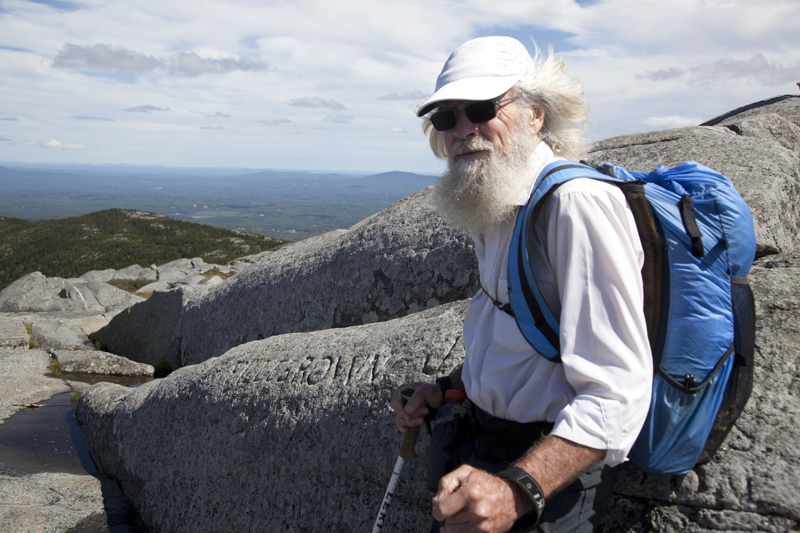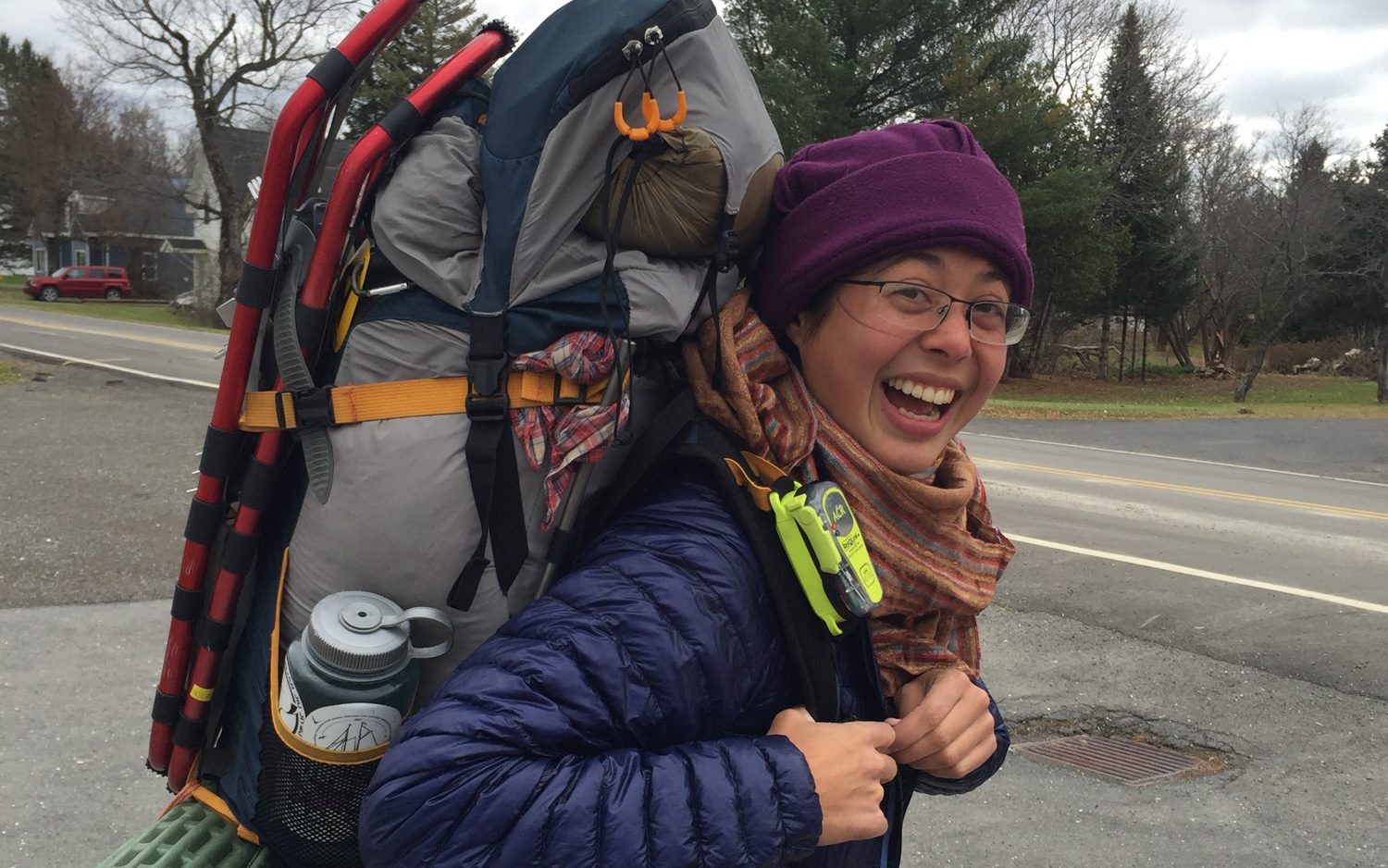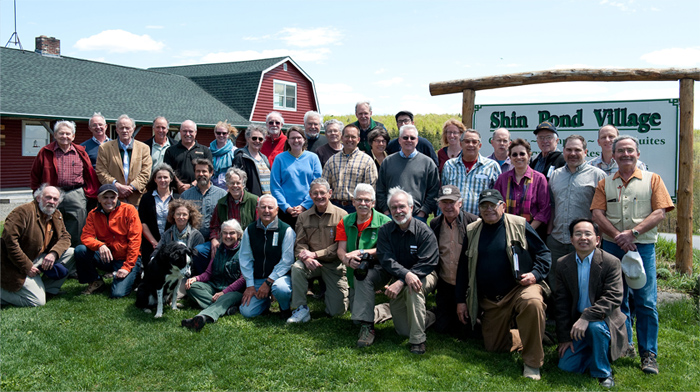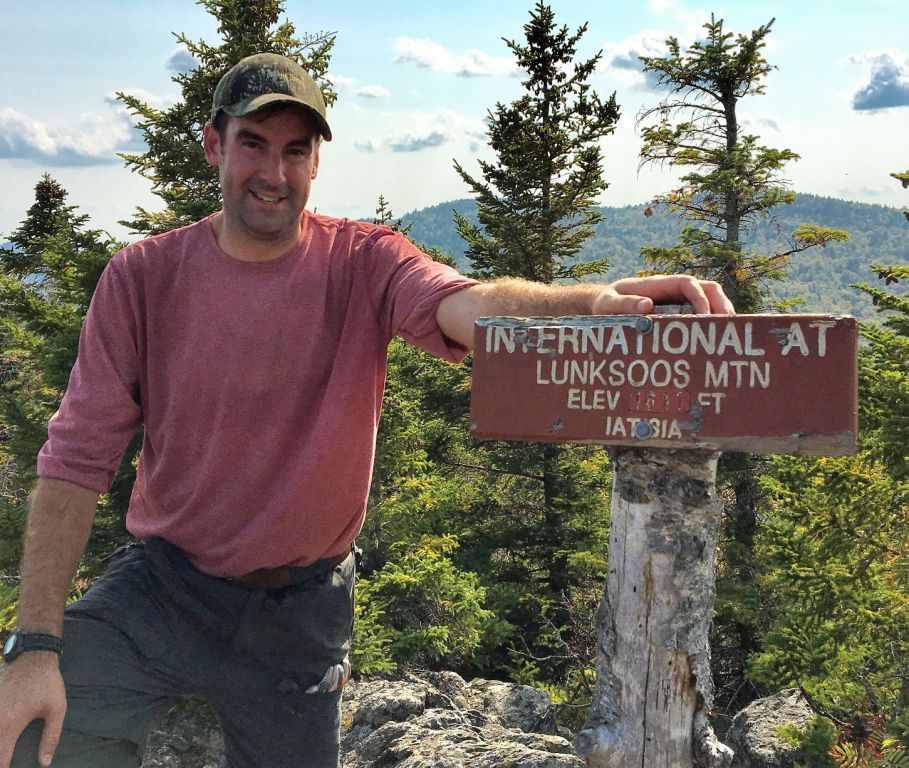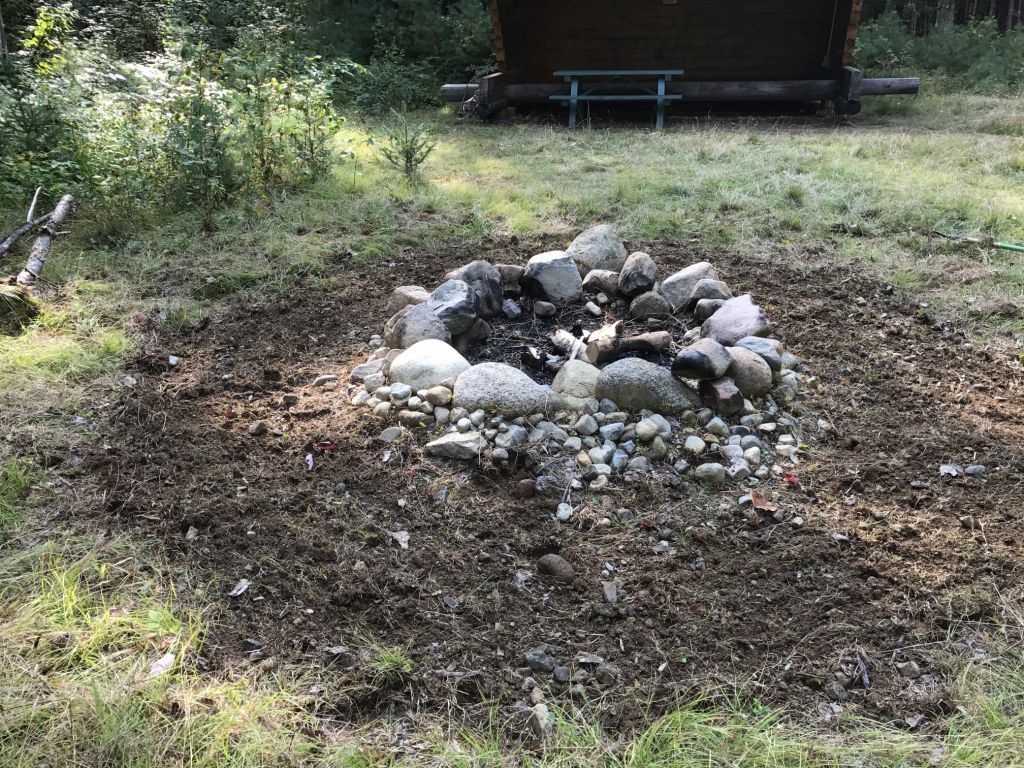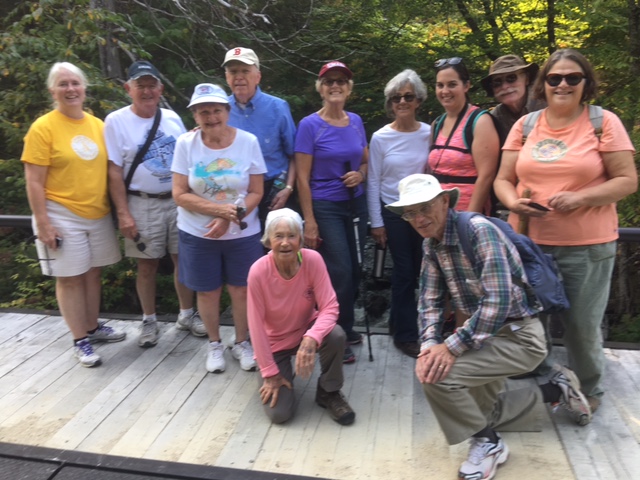The 2018 hiking/backpacking season is in full swing–in (where else?) Florida!
Continue readingHow IAT Hiker “Sail Away” Got Her Trail Name
You might sit down. There’s a story behind every name, yours and mine; and here’s a part of it I think you ought to know.
Continue reading‘Monumental’ – A Journey through Katahdin Woods and Waters
Save the Date! IAT Annual Meeting Shin Pond Village May 3 – 5
Annual Appeal
The Maine Chapter is wrapping up a very important year and we are looking ahead to making great strides in 2018. As a friend and supporter of the Maine Chapter, you have helped us complete, improve, and maintain one of the world’s great long distance trails. No other trail in the world has at its core a story of Earth history such as the IAT, and no trail community since that which created the Appalachian Trail has put the opportunity for rural economic development so clearly at the forefront of its mission. You have helped make that happen!
Since the morning in mid-October 1993 — at the Front Street Deli in Bath, Maine — that Dick Anderson first showed me a map of a trail that he had imagined, linking the three highest peaks in Maine, New Brunswick and Quebec, I have wondered whether or not I would walk it. After ducking the question — "Have you walked the IAT?" — countless times at gatherings and meetings of hikers and maintainers, I decided this past summer to walk the trail in North America. The Maine section had to be first, of course, and I completed the trail from Fort Fairfield to the new national monument east of Baxter State Park in the first week of October.
Now that first IAT miles are behind me, I can report to you with first hand experience that the dozens and dozens of volunteers who over the years have laid out, cut, and maintained our trail have done a remarkable job. When we presented our first map of the IAT on Earth Day 2000, over 80% of the trail in Maine was along the side of roads. It was not a bad walk, but one full of promise — promise that one day it might wind through the forests and along the streams and rivers of northeastern Maine. Twenty-three years later, nearly 80% of it is in the woods.
In addition to regular trail work and the efforts to relocate trail off of secondary roads, your support will help with the cost of updating the website and improving map and other resources for hikers on all sections of the trail in North America. We have started work on a map of the trail in North America and we envision a Cloud based companion guide to help people plan their long distance hikes or shorter walks along the trail from Katahdin to Crow Head in Newfoundland and the Nuussuaq Peninsula in Western Greenland. Companion guides were first written for the Appalachian Trail over thirty years ago, and we had a small printed version for the IAT in Maine, New Brunswick, and Quebec as early as 1998. These guides provide information about everything from public ground transportation to resupply, as well as opportunities for lodging, laundry, and other points of interest nearby the trail.
The IAT links people and places that ring the North Atlantic Ocean Basin, all of which share a common geologic heritage. Your gifts help us put it on the map!
With warm regards and thanks,
Sincerely,
Don Hudson,
President, IAT Maine and Co-chair, IAT International Council
To contribute to the annual appeal via paypal on website, go to www.internationalatmaine.org/support and click Donate.
Special Thanks to Eddie Woodin
The Maine IAT Patriot’s fans shared an afternoon of fun and football in Yarmouth watching the Patriots beat the Chargers 21 to 13.
Eddie Woodin, a long-time support of the International Appalachian Trail-Maine Chapter, generously presented IAT Maine Chapter President, Don Hudson with a $1,000 contribution.
His support is greatly appreciated by all the Board members.
Hopefully the IAT Patriots fans will be gathering for the superbowl!
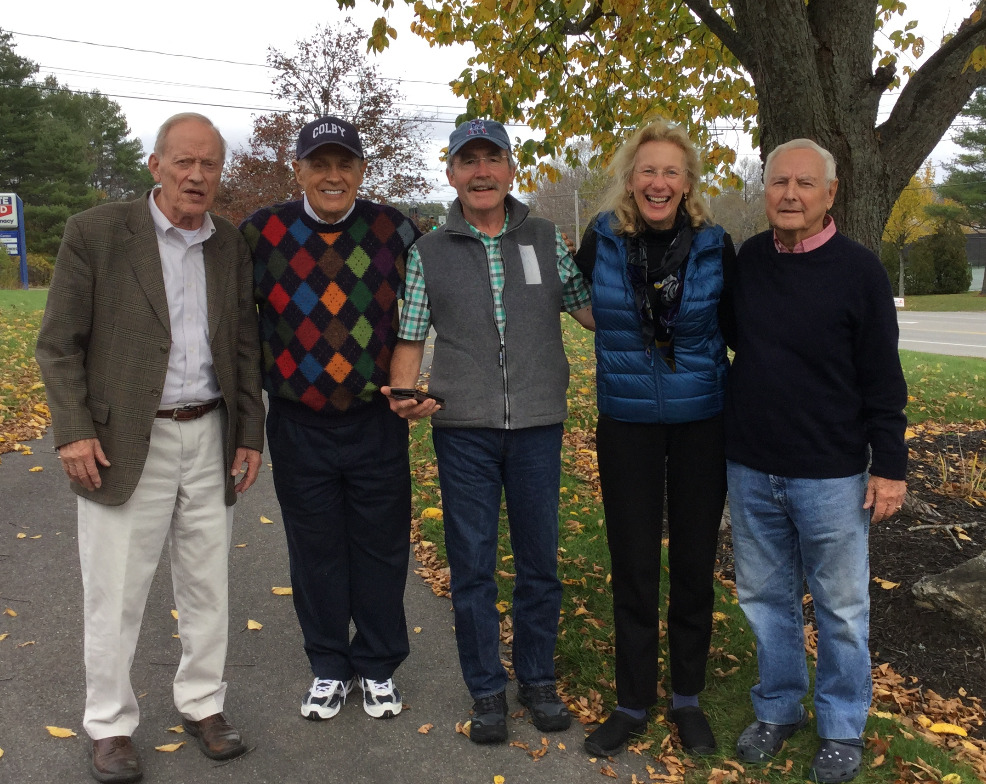
Dick Anderson, Eddie Woodin, Don Hudson, Elizabeth Swain, Earl Raymond
Tour 150
Sentier NB Trail and the Fredericton Trails Coalition completed the much-anticipated ‘Tour 150’ on Saturday, August 26th, with the aim of bringing representatives of the diverse trail community in New Brunswick to one of Canada’s most trail friendly cities — Fredericton, New Brunswick — to celebrate the completion of Canada’s Great Trail. The Great Trail, envisioned over two decades ago, is the world’s longest continuous trail, tying together the east, west, and Arctic coasts of Canada in a 20,000 mile multi-use system of walkways, bikeways, ski-ways, and paddle-ways.
The International Appalachian Trail has a strong and abiding interest in the success of the trail movement in New Brunswick and Atlantic Canada, as the IAT is co-located with sections of the Great Trail in all five Atlantic Canada provinces. IAT Founder Dick Anderson and IAT Maine Board Members Walter Anderson and Don Hudson traveled to Fredericton to help celebrate ‘Tour 150’ and this great day for trails in Canada.
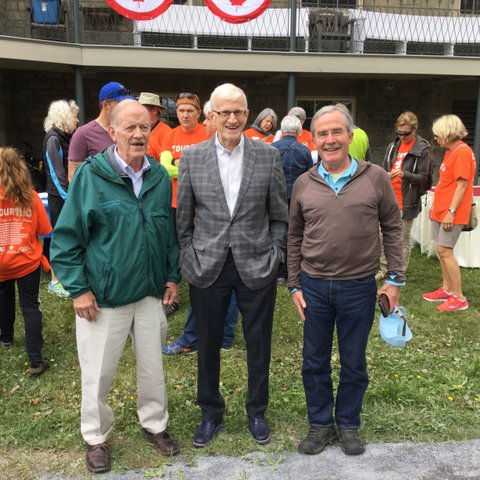
Dick Anderson, David Peterson, Don Hudson
IAT New Brunswick leader and Sentier NB Trail Executive Director Poul Jorgenson was one of the architects of Tour 150, and he was visibly excited to see trail users arrive on the back lawn of the residence of Lieutenant Governor Jocelyne Roy-Vinneau on the banks of the St. John River in Fredericton. They arrived on horseback, on bicycles and muscle-powered scooters, by canoe and kayak, as well as by walking and running. Trail enthusiasts from the four corners of the province were summoned — piped! — to the foot of the grand staircase by a ramrod bag piper in full uniform. Four pieces of a wonderful maple puzzle were delivered, coming together to make a wonderful representation of the province and its grand network of trails. Among the several speakers who warmed up the crowd, Past-President of the Fredericton Trails Coalition and Sentier NB Trail Dave Peterson made special mention in his remarks of the early work in 1994 and 1995 on the IAT in the province. Dave was a member of the original New Brunswick IAT Committee,, and was instrumental in shaping the early vision and route for the trail in the province.

Poul Jorgenson
The IAT Maine contingent was called out by several speakers, including representatives of local and provincial government, provincial agencies, Sentier NB Trail, and the Fredericton Trail Coalition. The Chair of the Board of Sentier NB Trail Jim Fournier sought Dick, Walter, and Don out in the crowd to make a special promise that his organization was committed to completing the IAT in the province, including the original route through the northwest corner of the province and a new southern connection with PEI and Nova Scotia.
Tour 150 was a great celebration of trails in New Brunswick, and the IAT was proud to be represented.
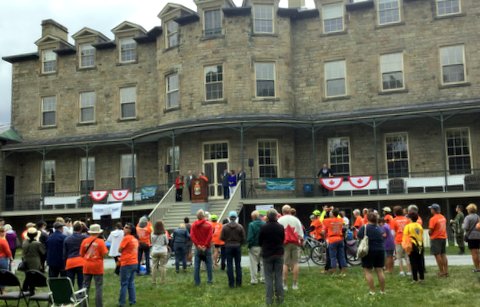
Fall 2017 Trail Work Trip Report
Stars over Katahdin

The International Appalachian Trail in Northern Maine begins in the new Katahdin Woods and Waters National Monument (KWWNM). That new Monument is in the largest area of pristine night sky east of the Mississippi River. From it we see stars that few in the eastern United States can view. The Monument’s sky quality meter reading is 21.62–on a par with the remote sites selected for world-class observatories (22).
Satellite images taken at night show most of the area east of the Mississippi illuminated by light pollution (see below). The most obvious exceptions are a dark region in the middle of the Maine Woods and a smaller dark region along the coast of Maine near Acadia and Washington County. Those dark night skies are our window into the cosmos, a source of inspiration for inquiring minds, and a potential magnet for “astro tourists.”
“Stars over Katahdin,” the fourth annual event to celebrate the starry skies of the North Maine Woods, was held on the “Overlook” of the Loop Road in the KWWNM. Local amateur astronomers and Astro Volunteers from Acadia National Park participated. For three days those astronomers and others shared their expertise at local events:
John Meader (Northern Stars Planetarium) held five inflatable planetarium shows in local schools.Acadia National Park Ranger Michael Marion and his four Astro Volunteers visited area classrooms and chatted with children. Kelly Beatty, senior editor of Sky and Telescope Magazine and board member of the Tucson-based International Dark Sky Association, gave two presentation to local town officials and business leaders. Personal visits were made to town offices near Mt. Katahdin to raise awareness of the value of our dark sky resource and its economic potential for astro-tourism in the area. Two solar viewing telescopes were set up for public viewing at the Millinocket Trail’s End Festival.
On Saturday, September 16th at KWWNM a bike and a hike event were held. In the evening, dozens of local residents attended the Campfire Chat at which the astronomers, the park ranger, ME Chapter IAT board members, and locals shared stories and magnificent views of the night sky. This was followed by telescope viewing from the “Overlook” of Saturn, star clusters within the Milky Way, and distant galaxies. Some students spent the night there in tents, courtesy of a special one-night permit. The volunteers were treated to a hearty breakfast at Lunksoos on the banks of the East Branch the following morning.
Our starry night sky is unique in the eastern United States and a resource with real value: for science education, inspiration, and environomental/astronomy tourism. And it is freely available to all. Unlike other natural resources we need not spend a dime digging it up or harvesting it. It’s all there on every clear night. This is a resource that other IAT chapters might want to consider; the IAT international meeting might want to give the night sky a place on its next agenda. We might want to talk to each other about this resource. How important is it to be able to look up to see the millions of stars when camping on a clear, dark, summer night? What can we do to protect that resource from encroaching light pollution?
What individuals can do
People around the globe are losing the night sky to light pollution that is growing at about 10% each year. Only one in four of the earth’s people can now see the Milky Way from where they live. This problem is entirely manmade: the result of over-lighting, poor fixture design, and the thoughtless placement/direction of lighting fixtures. Here are some things you can do:
Use only downward facing (fully shielded) outdoor light.Use only as much light as needed for security/safety, and put it only where you need it.If your town or power company is shifting to LED street lights, insist that they use luminaries of 3000 “kelvin” or less. These provide the warm hue favored by most people and are the least damaging to the night sky. 4000-5000 kelvin lights are sky killers.Encourage your community to adopt a sky-friendly outdoor lighting code. For an example, see the model code developed by the International Dark Sky Association (IDA) and the Illumination Engineering Society (www.darksky.org).
Have a friendly talk with neighbors who have upward facing lights.

